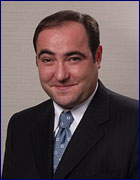Last week marked the 25th anniversary of Workers’ Memorial Day – a day set aside to remember those who were injured or died on the job. President Barack Obama issued a proclamation in which he noted “we must never accept that injury, illness, or death is the cost of doing business.” While we have come a long way from the tragedy of the Triangle Shirtwaist Factory Fire in which 146 workers were killed while trapped inside a garment factory due to locked doors and a collapsed fire escape, it is clear that we haven’t come far enough.
Recently, the New York Committee for Occupational Safety and Health (NYCOSH) issued a report on Workplace Safety in the Construction Industry. The report was frightening. Just last year alone, 23 construction workers were killed while performing their jobs. According to the NYCOSH report, many of these construction deaths could have been prevented had proper safety precautions been taken. The report noted that the Occupational Safety and Health Administration (OSHA), established by the U.S. Congress to enforce safety practices, is understaffed, thereby leaving many worksites uninspected. Also, penalties for infractions are far too low to deter some employers from not implementing proper safety precautions.
Many of us in the workforce thankfully are not engaged in hazardous employment, but there are dangers often not anticipated. According to the U.S. Department of Labor, overexertion due to lifting or bending the body was the leading cause of workplace injury in New York. These types of injuries are seen in health care, food services, educational services, retail, professional and business services. In short, most work-related injuries are not confined to the construction industry but rather are occurring in every industry.
What should you do to protect yourself from many of the common injuries? First and foremost, know exactly what your job duties entail. Find out how to properly perform your job before you engage in your work.
- Make sure your workspace is maintained in a neat and orderly way so that you don’t trip on wires or boxes, or slip on papers, or food or oil in the food service industry.
- If your office has a break room or kitchen, make sure spills are cleaned up immediately.
- Office supplies should be stored properly so they don’t fall on you or your coworkers.
- Know the proper way to lift heavy items to protect your back
- Make sure your computer workstation allows you to maintain adequate posture so you don’t put undue strain on your arms, hands and back
- Have an ergonomic keyboard that can help reduce injuries to your wrists
- If you are not trained as a technician, do not try to fix equipment; bring in a repairman
- Make sure you are instructed on what to do in case of a fire; know where the exits are and make sure your company engages in fire drills
If all else fails and an accident does occur, know the proper procedure for reporting an injury. Workplace safety is crucial. It will save employers money as injuries result in loss of manpower and higher insurance rates, but most importantly, workplace safety will save lives.
—
Catherine M. Stanton is a senior partner in the law firm of Pasternack Tilker Ziegler Walsh Stanton & Romano, LLP. She focuses on the area of Workers’ Compensation, having helped thousands of injured workers navigate a highly complex system and obtain all the benefits to which they were entitled. Ms. Stanton has been honored as a New York Super Lawyer, is the past president of the New York Workers’ Compensation Bar Association, the immediate past president of the Workers’ Injury Law and Advocacy Group, and is an officer in several organizations dedicated to injured workers and their families. She can be reached at 800.692.3717.
Prior results do not guarantee outcomes.
Attorney Advertising.








